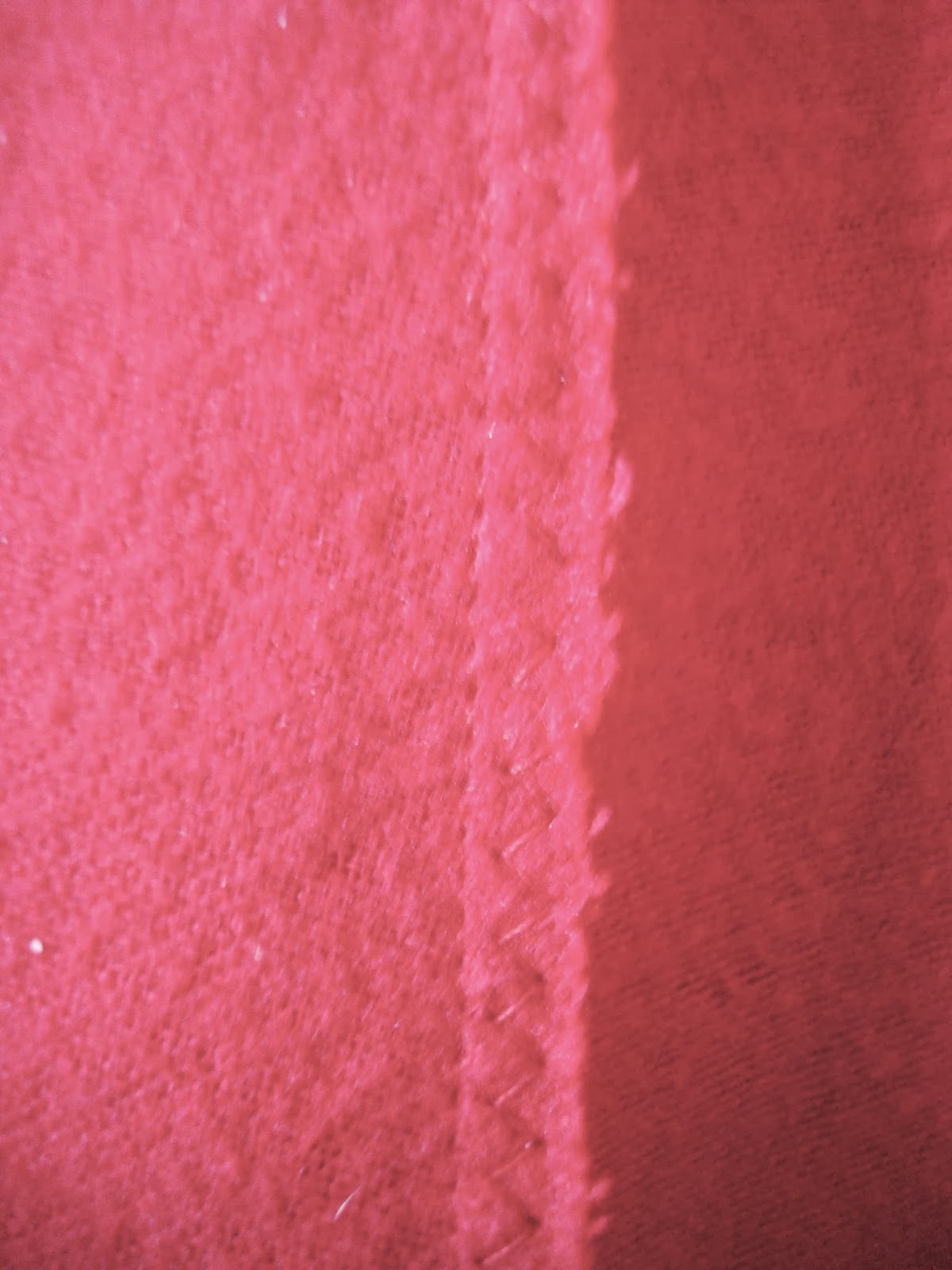Alright I promise that, during my sabbatical from blogging, I did sew something other than aprons but for the time being that is what I a bringing us all up to date on. No more aprons for a while after today. At least for a little while.
I have already blogged about Sewing Machine Basics by Jane Bolsover. The pattern for this full length apron comes from that. The pattern pieces for this and the other projects in the book are included on large sheets at the back of the book for you to trace off yourself.
The book is neatly arranged for the sewing novice. Each chapter takes the form of a 'Workshop' which teaches the reader a new technique. This is then followed by a project which makes use of the newly acquired skill. The 'Bound-edged apron' project tests -guess what? - the use of binding and patch pockets.
I decided that the usefully sized pocket should not pattern match with main apron piece. I did however try to centre the pattern piece on a motif so that over all the pocket ended up looking balanced.
I was very much in Singer 15K80 mode when I was making aprons during the late spring of 2014. Hardly surprising I got a bit smitten with that machine once I got it sewing well. Just look at those stitches! I am rather proud of the triangles strengthening the corners. Remember, after all, I was able to achieve those on a hand cranked machine which lacks a reverse feed - lots of needle down, presser foot up, action going on and I actually counted the stitches while I was sewing.
I am slightly less proud of the above nonsense. The method of attaching the binding involved sewing through all layers at the same time - it looks a lot better from the right side. This being me I was able to include, even on an apron with only two very simple pattern pieces, a flat felled seam, albeit a very short one at the nape of the neck. There is no way I could "press open and finish seam allowance with a zig zag" given the machine I was using to sew this project - what's a boy to do?
I cut out the ties using a ruler and rotary cutter on the long grain of the fabric. They are stitched along their long edge, turned through and then the open ends turned in and topstitched to the apron edges with a square and cross thingy.
All the raw edges are encased with home made bias binding. Lots of measuring and fun! Recognise the green fabric from the second apron with a ruffle? I told you my stitching looked more even from the right side didn't I?






















































